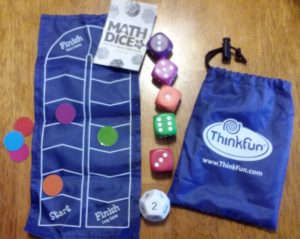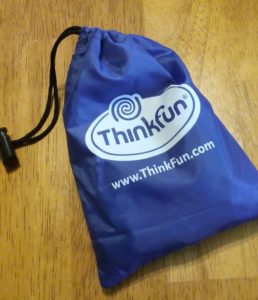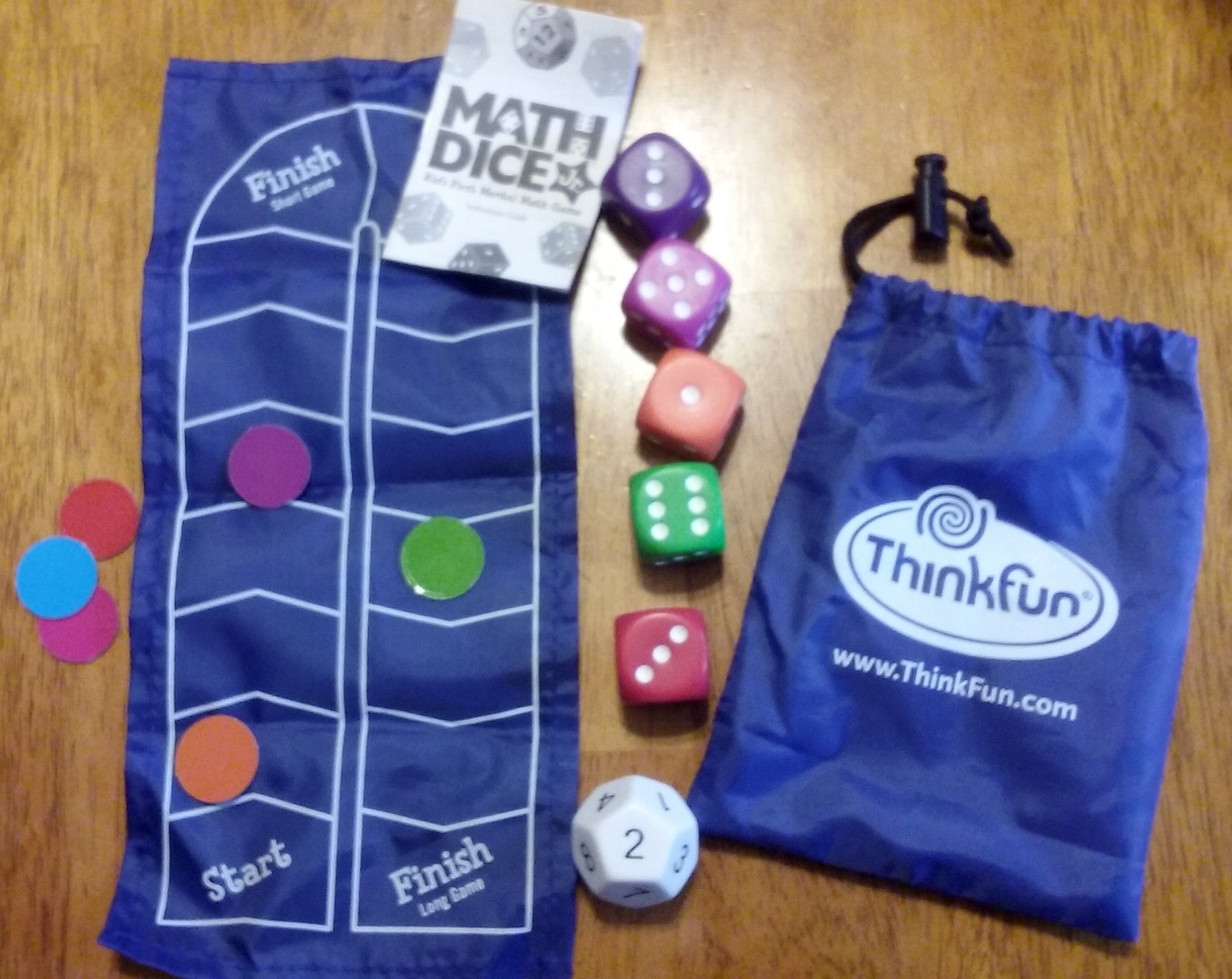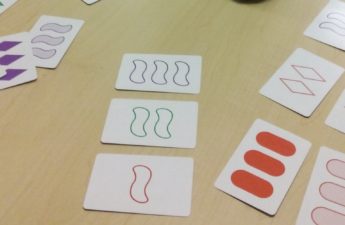This post may contain affiliate links. Please read the Disclosure Policy for details.
Maybe you have already seen my post on the versatility of number cubes…aka dice…in the post titled “Dice Magic.” In it, I describe how to use dice to practice all sorts of math skills as your child grows in mathematical thinking.
This post goes into detail about a great, commercially available game called Math Dice, Jr. In this fun and simple game, players use five number cubes to create math expressions that equal a target number. To play, you first roll the large white twelve-sided die. This reveals your target number for the round. Next, you roll the five number cubes and look for ways to combine the numbers on them to make the target number.
Here is an example of a round of play:

The target number rolled in this example is 10. The other numbers rolled are 1, 1, 2, 3, and 6. The object is to use addition and subtraction with the rolled numbers to create a value of 10.
Some possible solutions in this example include:
- 6 + 3+ 1 = 10
- 6 – 1 + 3 + 2 = 10
- 6 + 1 + 1 + 2 = 10

This game also has a game board component. I don’t typically use the game board when I play with the student I tutor since I most often play as a little warm-up to the day’s other activities. The game board portion, though, creates a definite beginning and end to the game as players move their colored chips across the spaces according to the number of cubes they use in their expressions. Get to the last space and you win!

I love that this game comes with a storage bag that easily fits all the pieces. The number cubes, target number dice, colored chips, and game board fit neatly in the little drawstring bag that keeps everything together and doesn’t take up much space.
My family found out the hard way that not all the colored cubes are “standard.” During game night, I pulled out these colorful dice from Math Dice Jr. so each of us could have our own for the game we were playing. After my husband never rolled anything greater than three for most of the game, he took a closer look at his cube and discovered there were two sides each of one, two, and three dots, but no four, five or six! We all had a good laugh over that! If you use your dice for other games, make sure to check they all have the numbers you want!
Thinkfun also has a more advanced version of this game, called Math Dice, and lots of other games and challenge-based activities to get you thinking and practicing a variety of skills including problem-solving, logic, math, and engineering.
Have you played Math Dice or Math Dice, Jr.? What did you think? How does playing games help you learn math?



